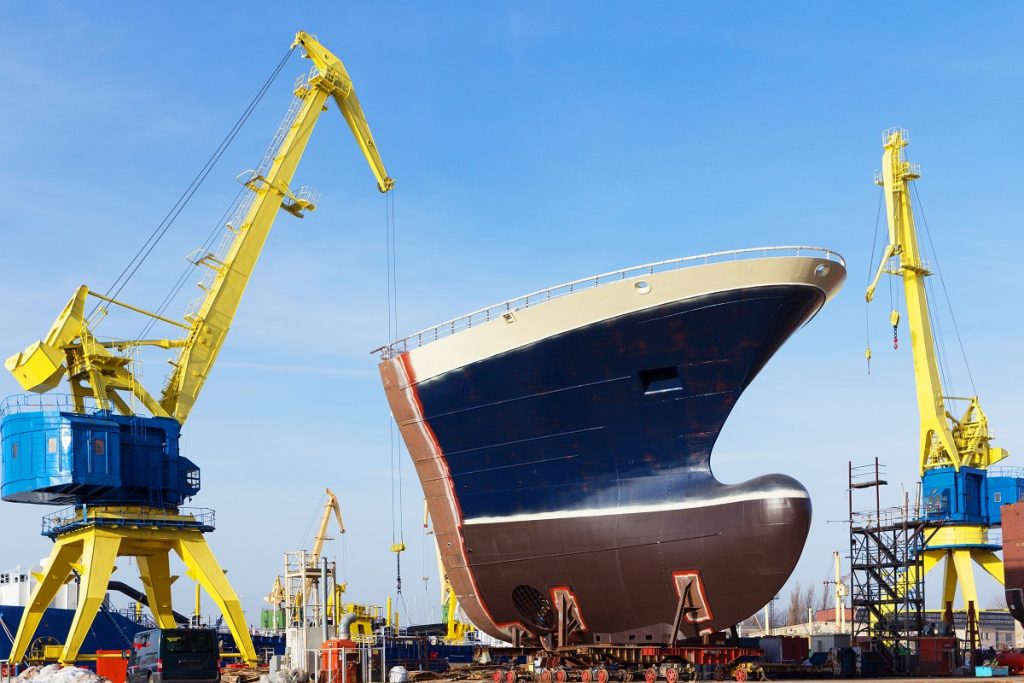Aaron Wens on the Lifecycle of Your Ocean-Going Vessel Investments
The lifetime of a modern ocean-going vessel is 25 to 30 years
. When a new ship is ordered, there is an extensive list of steps that must be completed in order to build a useful vessel that is fitted out for its intended purpose and ensure that vessel will remain relevant long into the future. The maritime business is fully globalized, and a ship will often travel great distances. Aaron Wens, a marine engineer with 16 years’ experience, explains the life cycle of an ocean-going vessel.
Design
The first step in the process of building a new ocean-going vessel is design. Marine engineers and naval architects have a broad skill set and are experienced in putting together the plans for a new ship for any intended purpose.

Some of the different types of ships that are built include military vessels, cruise ships, container ships, and fishing vessels. Each type of ship has its own unique set of needs. An experienced naval architect should be able to tailor their design to the needs of their client.
Another important aspect of ship design is building the engine. Sometimes these engines are ordered from existing models, but sometimes they must be individually designed, as in the case of the largest cruise ships in the world.
Financing
The next step in the process is to secure financing for the new ship. Ship financing is a complicated process since the sums of money involved are so large and are often dependent upon regional finance sources. The ship broker and financing operations must work together to create a feasible financial plan. Investors may be called upon to cover some of the cost of the ship in return for some of the proceeds of the sale.
Securing the Shipyard
The next step is finding a shipyard to work on the vessel. This is sometimes a delicate negotiation process. The shipyard must have the space and personnel needed to complete the build. Frequently, ships are built overseas and then brought to the United States to be commissioned. There are many naval shipyards in the United States which work on military vessels.
Contract Signing
The first step in building a ship is signing the contract between the owner and the shipyard. The first payment is made when the contract is completed. The ship receives a unique IMO number and a hull number which will stay constant throughout its lifetime.
Production Design
The production design is the next step. The production designers are engineers who draw up the plans for the building of the ship. The information contained in the ship’s plans must be translated to step-by-step instructions for building it. Marine engineers are instrumental in this process. The production designer helps the field staff organize all of the components of the ship.
Purchasing Materials and Equipment
When the production plans have been designed, the next step is to buy all of the materials and equipment that will be needed for the build. Building an ocean-going vessel is a daunting task and the array of materials that are needed is vast. It is necessary to keep track of all of the material and the delivery dates to make sure that the process is as efficient as possible.
Cutting the Steel
Steel plates must be cut into the correct shape for each deck and hull section of the ship. In order to form the ship’s hull and decks, the metal must be heated and bent. This is a highly specialized aspect of steelwork and is the foundation for the seaworthiness of the vessel. Typically, this is the time when the second payment is made on the vessel.
Assembly
At this point, the ship is assembled. The process of assembly involves building smaller blocks and then welding these together to form the structure of the ship. Many large vessels like cruise ships are built in halves which are then carefully joined together. This allows the ship to be worked on efficiently.
Launch
When the ship is launched for the first time, it is an exciting moment for the designers and builders as well as the owners of the new vessel. Ships are sometimes launched from a dock, which involves letting water into the dock to float the ships. They may also be launched from a building berth.
Finishing
This step is completed at the dock. The interiors of the ship and all of its instrumentation are fitted properly. There is a rigid system of testing all of the ship’s instruments and equipment.
Trial at Sea
The sea trial tests the performance of the ship and the equipment. A record of this test is kept as a proof of the vessel’s performance record.
Delivery
Another exciting moment for the shipbuilder comes when the product is delivered to the end customer. There is a ceremony involving the captain, engineer, and crew. This is when the third payment is generally due. A new ship typically has a warranty between 1 and 2 years.
Recycling
When a vessel has reached the end of its useful lifespan, it must be recycled. The ship is generally thought of as ready for recycling if the cost of repairs is outweighing the ship’s usefulness. Ship scrap yards buy the expired vessels and recycle as many of their components as possible.
Shipbuilding Areas
Some of the best-known shipyards are in China, Japan, and South Korea. Other well-known shipyards are in Italy, Spain, and the United States. These shipyards produce a great number of ocean-going vessels in the world today. Aaron Wens underlines the importance of the ocean-going vessel to today’s economic landscape, where many goods are imported and exported around the world each day.

